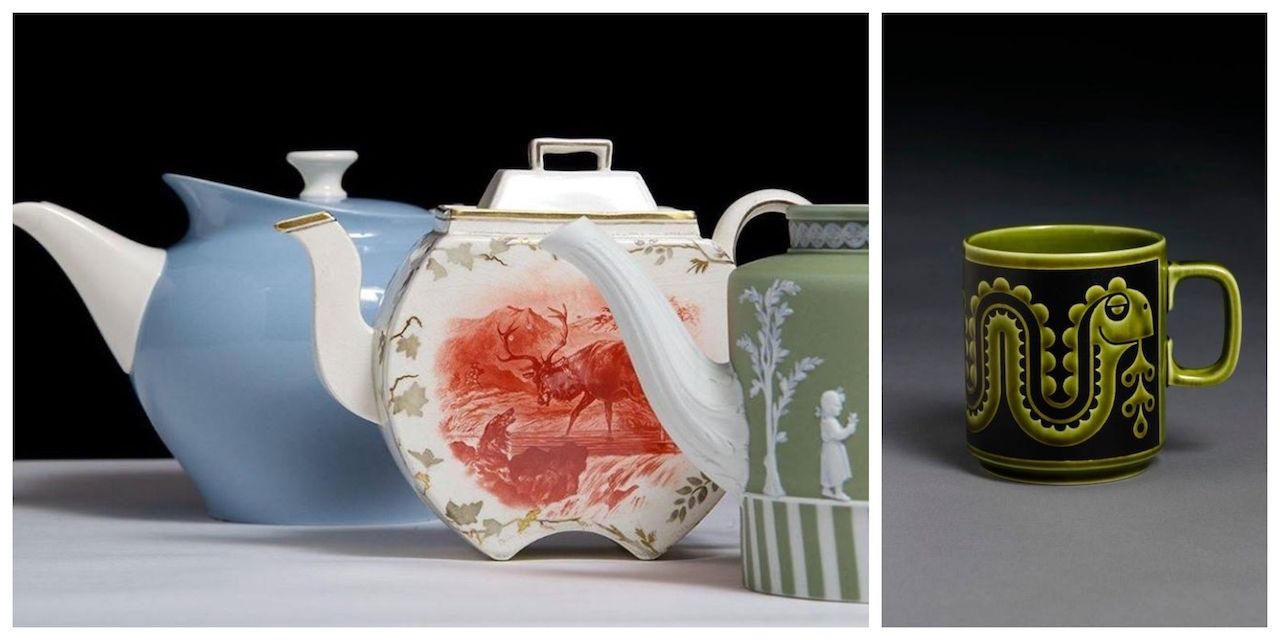There is no shortage of museum offerings in London — the British Museum, the National History Museum, the National Gallery, etc., all contain extraordinary pieces worth checking out. But while your options are abundant, we don’t recommend that you cram your visit to the British capital with museum visits — they’ll eventually all blend into one and the whole thing will bore your socks off. Instead, just pick one that suits your interests and explore extensively.
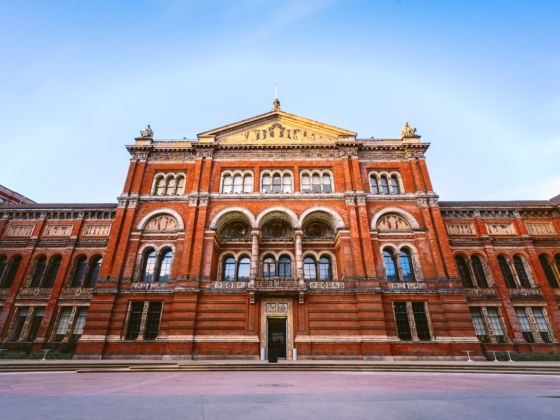
How to Make the Most of Your One Day at the Victoria and Albert Museum
If you’re not a regular museum-goer or don’t think you’ll enjoy looking at archaeological finds, paintings, or fossils all day, the Victoria and Albert Museum is probably the best choice for you. The V&A focuses on art and design and provides visitors with an immense collection of stunning objects from around the world, from quirky ceramic pieces to cool items of fashion, glitzy jewelry, funky furniture, ornate architecture, and more. There’s enough variety to keep you amazed and interested throughout an entire day, but if you want to make your visit count, you’d better get organized. To make sure you get to see the most important pieces on display away from the crowds and check out some fascinating, yet underrated items, we’ve compiled some hot tips on how to make the most of your one-day visit at the Victoria and Albert Museum.
Before you go: the #1 piece of advice for visiting the Victoria and Albert Museum
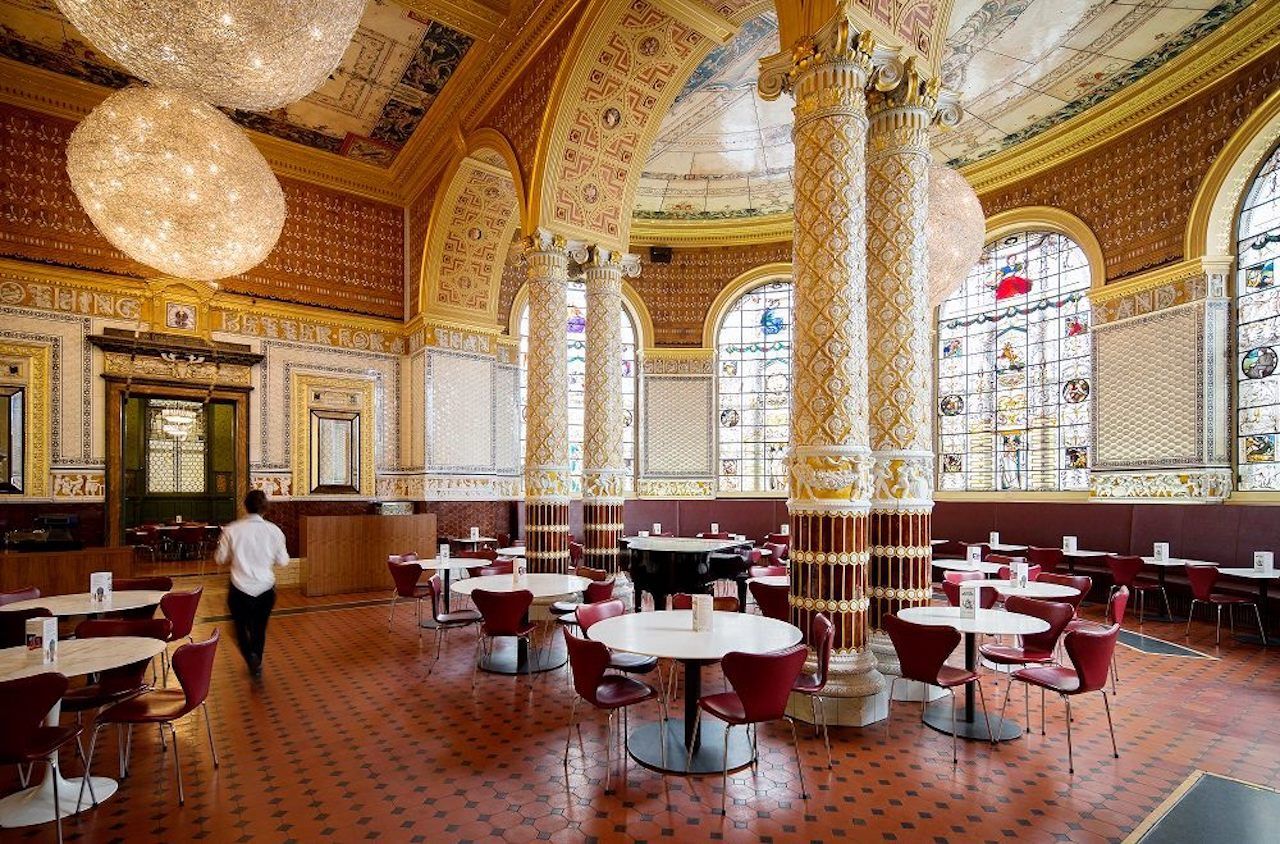
Photo: Victoria and Albert Museum/Facebook
Plan your museum visit around your eating schedule. Have breakfast at your accommodation before the museum opens at 10:00 AM, and stay in when your stomach starts growling. Most museum cafes have the reputation of being overpriced and serving mediocre food, but that’s not at all the case at the V&A. So don’t go galavanting around South Kensington for a cheap meal, because you have some great options and the best atmosphere right in the museum.
The coffee is excellent — especially paired with a large scone lavished in clotted cream and jam — and there are delicious pastries, fancy salads, sandwiches, hot food, and cakes that are high quality. And even if the items on the menu don’t appeal to you, we urge you to grab a drink, if just for the chance to sit in one of the period rooms of the world’s oldest museum restaurant.
Forgo the Courtyard Café or the Garden Café — even if the weather is splendid — and make a beeline for the Gamble Room, the Poynter Room, and the William Morris Room. The highly decorated rooms, with ornate columns, arches, ceramic tiles, chandeliers, stunning organic designs, stained glass, and more, are not your average cafe settings — they’re dazzling pieces of art in and of themselves.
Note that the museum offers visitors the chance to have a recreation of Queen Victoria’s afternoon tea in the Morris Room every Friday between 1:00 PM and 7:00 PM. Reservations are mandatory, but it’s worth planning in advance.
The best times to visit
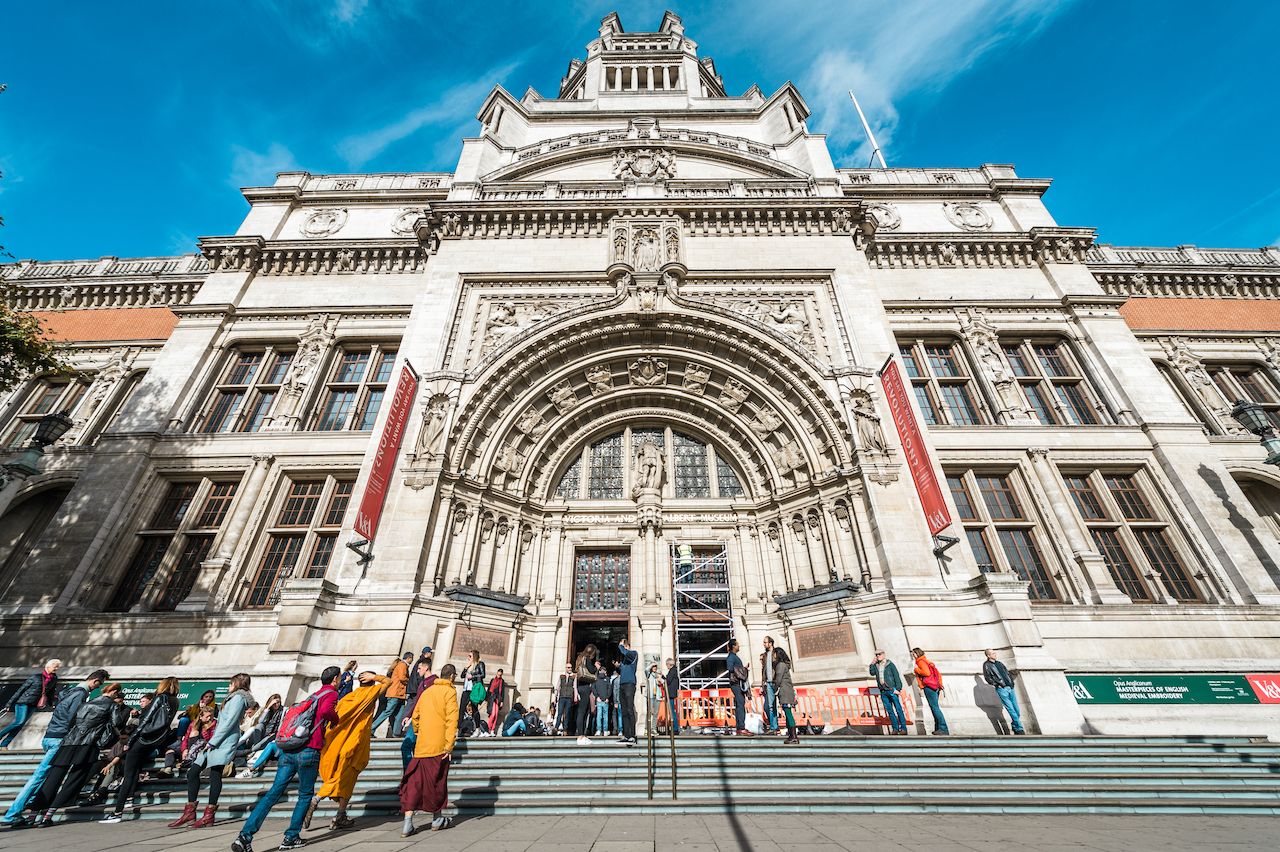
Photo: Aivita Arika/Shutterstock
Like all the free and popular museums in London, the V&A can get busy. Arrive before it opens its doors at 10:00 AM and join the line. Don’t be alarmed by the number of people waiting to get in — the museum is immense and visitors tend to spread out quite evenly, which provides space for everyone. Long weekend and summer holidays are the busiest times of the year, so visiting on a weekday off season is always recommended if you’re able to do so.

Photo: pio3/Shutterstock
The museum has two entrances, the grand, traditional entrance on Cromwell Road and the more contemporary one on Exhibition Road. Both are similarly busy, but remember to check both of them. The grand entrance leads visitors just below the dome from where one of Dale Chihuly’s magnificent sculptures hangs; the Cromwell entrance is through remodeled arches and via a modern porcelain-tiled public courtyard.
The museum closes at 5:45 PM daily, except on Fridays when selected galleries remain open until 10:00 PM. Night visits can be busy, but they offer visitors the opportunity to see the objects under a different light and in a unique atmosphere.
Free tours
Upon entering the museum, and before heading quickly to the jewelry gallery to have it all to yourself (see below), check out the schedule for the free tours. The daily free tours and their starting times are listed on screens at each entrance, but all of them start under the dome (Cromwell Road entrance), on the left, beyond the front desk and before entering the gift shop. There’s a seating area where visitors who want to go on the tours are expected to wait.
There’s a free tour almost every half hour throughout the day and they’re all led by volunteer experts who know the museum and its collection inside out. All of them are fascinating and will give you great background details on the museum and its galleries. The tours vary in topics, so you can select whatever you’re most interested in, such as general introductory tours of the museum, the performance and theatre collections, the Middle Ages, and more. You can take as many tours as you’d like.
Some tours only take place weekly or monthly, such as the LGBTQ tour that takes place one Saturday per month and the Fashion in Focus tour that happens every Thursday, so check the list online before your visit.
Where to start your visit
We highly recommend that you start your visit at one of the busiest parts of the museum before it fills in. The jewelry gallery comprises three rooms filled to the brim with a collection of 3,500 jewels spanning 3,000 years of history. Even if you’re not into shiny things, you’ll appreciate the craftsmanship and history of every single piece in this gallery that is decorated in dark tones and very dimly lit so that the precious items truly shine. There are brooches, hair ornaments, collars, pendants, crowns, and more, all more beautiful and ornate than the next. The real showstopper is the Townshend Gems collection, however, which is a display of rings arranged in a hypnotizing spiral. The jewelry gallery is narrow and extremely popular, so make your way there as soon as you get into the museum and you might just be the first person to admire Queen Victoria’s sapphire and diamond coronet and Beyoncé’s giant butterfly ring.
Where to find it: Level 2, Rooms 91 to 93
Five must-see pieces and collections and why they matter
There are more than 60,000 objects on display at the V&A, so seeing them all and appreciating their significance in the space of one day is impossible. Here, we have selected five pieces that we believe are must-sees, two of which are listed in the museum’s “20 highlights from the collection” brochure. Once you’ve checked these out, have a look at some underrated pieces (see below) and wander about without any itinerary — there are treasures to be found in every corner of the museum.
1. Tipu’s Tiger
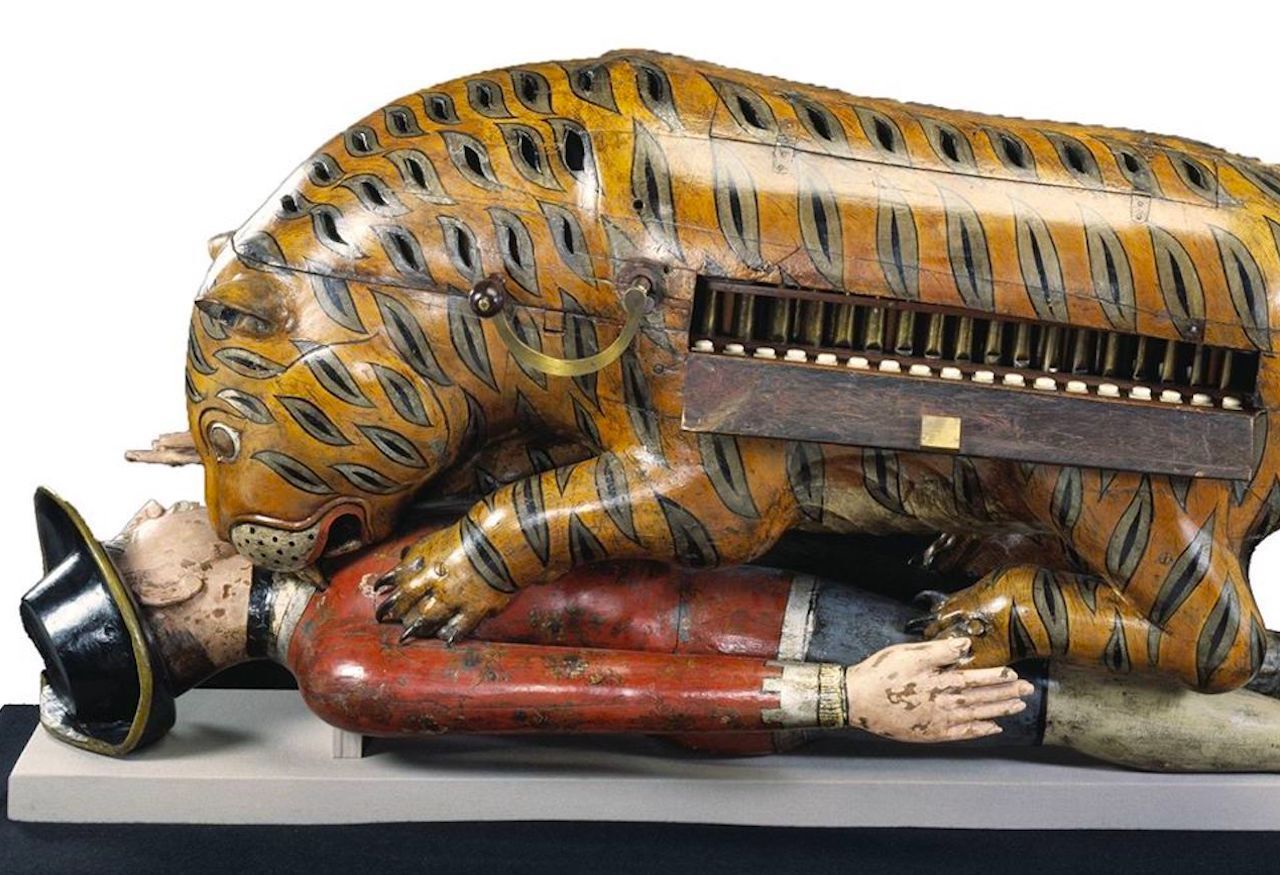
Photo: Victoria and Albert Museum/Facebook
A piece that is both morbid and fun, Tipu’s Tiger is an incredibly well-preserved wooden automaton made for Tipu Sultan, ruler of Mysore, India, at the end of the 18th century. The object depicts a man, believed to be European soldier, being savagely attacked by a tiger. Inside the tiger is an organ that can be played, and when one cranks the handle on the tiger, the man moans and moves his arms around in what looks like an agonizing death. The piece sheds light on the relationship between Tipu Sultan and the soldiers of the British East India Company army whom he resisted vehemently before the British victory in 1799. The automaton was taken from his palace and sent to London that same year.
Where to find it: Level 0, Room 41, South Asia gallery
2. Trajan’s Column
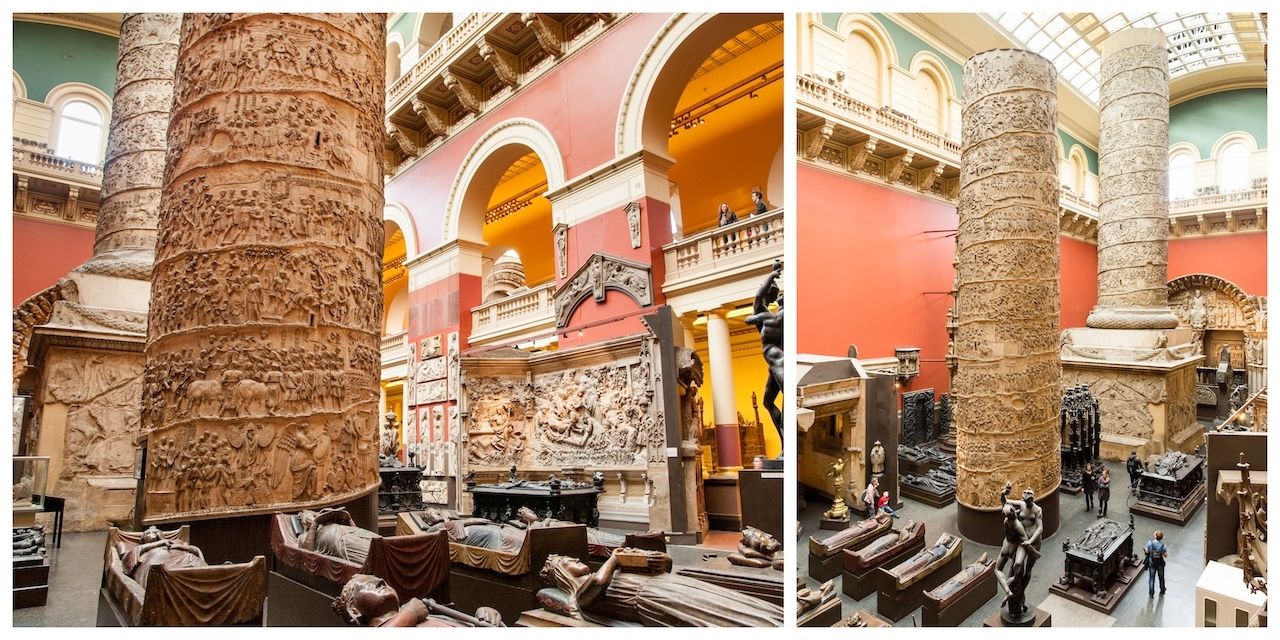
Photos: Alex Segre/Alex Segre
Trajan’s Column is probably the biggest and most impressive piece to be found at the V&A. It’s so big that it was cut into two enormous halves, 82 feet each, to fit. Although the column looks like the real deal, it’s a 19th-century plaster cast of the original. The original, created to commemorate the victory of the Roman Emperor Trajan against the Dacian, was erected in 113 CE in Rome, where it still stands today, more than 1,900 years later. The column is an object of immense precision as more than 155 scenes of war are depicted upon it in a spiraling fashion. It’s hard to make them all out, but the carving work is so intricate that it’s worth taking the time to appreciate it.
Where to find it: Level 0, Room 46A, Cast Courts gallery
3. The Ardabil Carpet
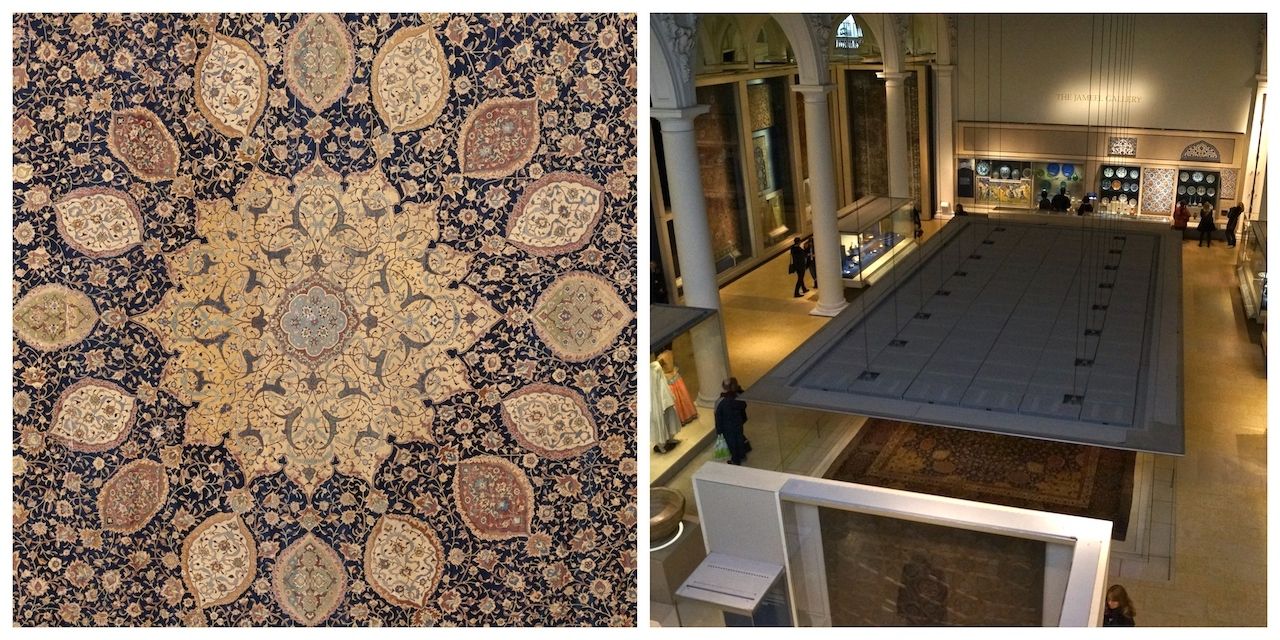
Photos: 3DF mediaStudio/Shutterstock and Victoria and Albert Museum/Facebook
While looking at a rug may not sound like the most exciting museum activity there is, we’re certain that staring at the Ardabil Carpet for a few minutes will blow your mind.
The carpet was created between 1539 and 1540 CE in Iran and is thought to be the world’s oldest dated carpet and one of the largest. It is believed to have been created to decorate the shrine of Sheikh Safi al-Din Ardabili.
The work put into displaying the carpet is proportional to its beauty and importance. Wrapped in a large rectangular case partially made of glass for museum-goers to observe it with ease, the carpet is lit for 10 minutes every hour and a half to preserve its colors created from natural dyes. Plan your visit to this part of the museum carefully; if you arrive a little early, you may be able to score a seat in front of the case, so you can examine the carpet and read all about its background details from one of the booklets at your disposal. Of course, we do recommend that you walk around the carpet while it’s lit to get a full picture of the magnificent object.
Where to find it: Level 0, Room 42, Islamic Middle East gallery
4. “Strawberry Thief” by William Morris

Photo: Victoria and Albert Museum/Facebook
William Morris is one of the great names of art and design of 19th-century England and one that is found again and again at the V&A. One of the leaders of the Arts and Crafts movement, Morris advocated for handmade, decorative objects while the country was in the middle of the Industrial Revolution, which started manufacturing similar objects of poor quality in great quantity. His focus on organic patterns — flowers, leaves, trees — is in stark contrast to the newly created machines of the time, and reflect his desire to counter the ills of the advancing technology. The V&A has many of his pieces, such as textiles and wallpapers, two mediums he is extremely famous for, as well as tiles, book designs, and more. “Strawberry Thief” is his most famous design and one of great beauty; it depicts thrushes on strawberry plants in a heavily colored and busy pattern on furnishing textile. The design, as well as many other Morris creations, is still sought after to this day in wallpapers and other home decoration items and comes at a high price. The museum gift shop carries items bearing his creations for those who wish to have a Morris design at home without breaking the bank.
Where to find them: Level 3, Room 125, Britain (1760-1900) gallery
5. The fashion collection

Photo: Victoria and Albert Museum/Facebook
While some may think that fashion is a frivolous topic, as one of the most significant vehicles for art and design, it’s an essential part of the V&A. The entire fashion collection of the museum is stunning and it would be a mistake to pass on it just because you don’t think it’s worth your while. Spanning five centuries, the collection contains shoes, hats, bags, suits, and dresses of all shapes, colors, and sizes that are sure to leave you amused, gobsmacked, and inspired. Visitors’ favorites include “mantua” dresses, i.e. large, cumbersome dresses worn in the 18th century, and Alexander McQueen’s “Plato’s Atlantis” silk dress. The fashion collection is small, but impressive, so devote some time to it. Note that it is a busy room of the museum, so the earlier you get there, the better.
Where to find it: Level 1, Room 40
Most underrated pieces and galleries to check out
1. “Breathless” by Cornelia Parker
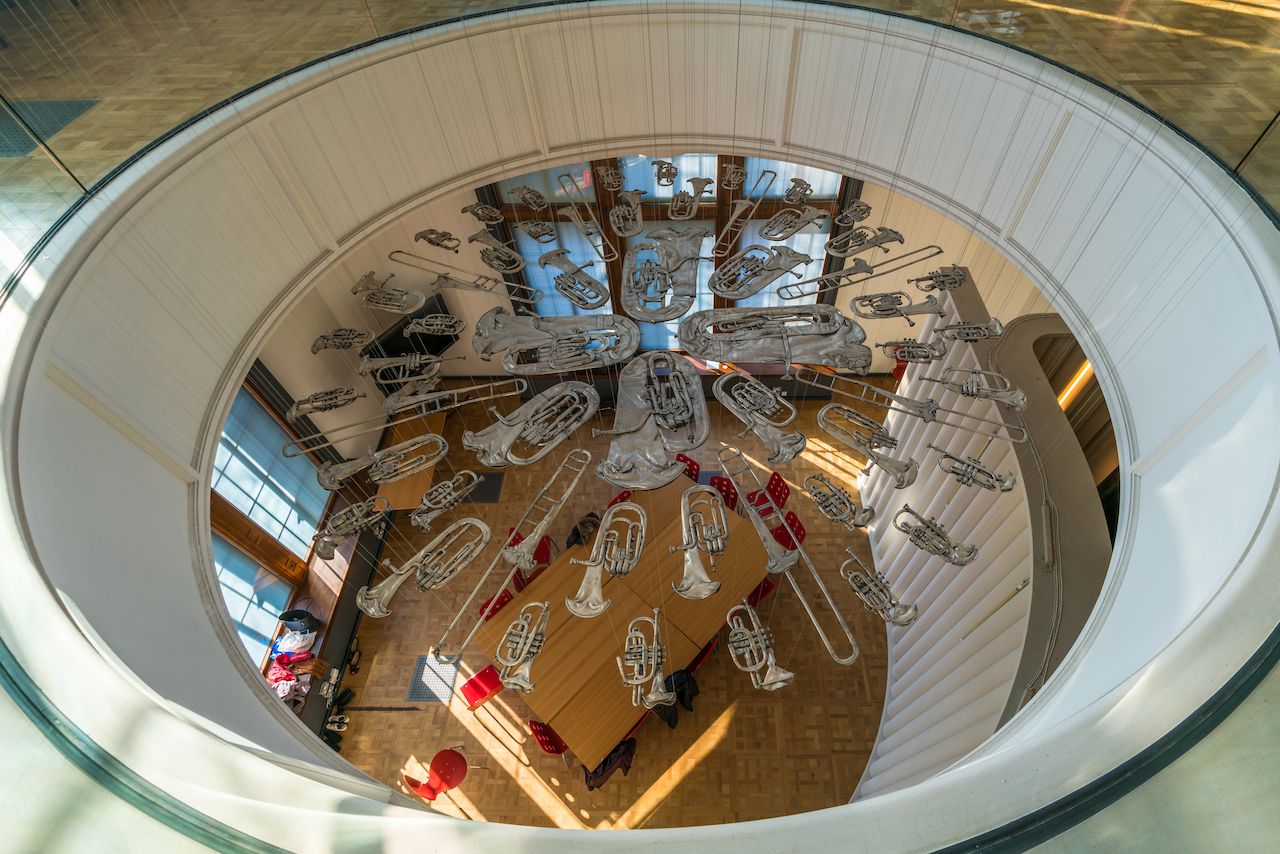
Photo: BBA Photography/Shutterstock
You’ll need to climb all the way to the third level to see this contemporary installation from above, but it’s worth every step. Composed of 54 wind instruments squished flat and hung from wires in a circular way from a large opening in the floor, “Breathless” is one of the coolest modern pieces in the museum and one of our favorites. Although well-known, it’s rarely noticed by first-time visitors, so you’ll almost certainly have the viewing spot to yourself. When you’re done seeing it from above, go down one floor and observe it from below. You’ll notice that the instruments are polished when seen from above and tarnished when seen from below, which is the artist commenting on the idea of upper and lower class, among other things.
Where to find it: Level 3, Room 121, Britain gallery
2. The whole ceramic gallery
We highly recommend visitors to make the trip to the fourth level of the museum and check out the entire ceramic gallery. You’ll likely be on your own up there and you won’t regret what you’ll get to see in silence and solitude. From funky teapots to figures, plates, cups, sculptures, vases and more, the ceramic collection is staggering and covers just about every country in the world and spans 2,500 years of history. You’ll have fun and be amazed at the variety of designs created over the years to make kitchenware stand out. Once up there, look up inside the highest cupola to see “Signs and Wonders,” the beautiful installation created by Edmund de Waal, Britain’s most renowned contemporary ceramist and famous author of historical fiction novel The Hare with Amber Eyes.
Where to find it: Level 4, Rooms 136 to 146
What you can skip
Every single piece displayed at the V&A is of historical significance and the result of unmeasurable talent, and as such, the entire collection is worth seeing. That said, we all have our preferences. If you’re not into the art of photography, just forgo the Photography Center (Rooms 100 and 101 on the second level), or if you don’t have any affinity for ironwork or metalware, don’t bother visiting these sections (113, 114A-B-C-D-E on the second level). We recommend that you check out the map of the museum before you go so you can plan according to your interests, likes, and dislikes. Maps are available at the entrances so get yourself a copy so you can navigate your favored areas of the museum easily.
What you didn’t know

Photo: TK Kurikawa/Shutterstock
The V&A has the best museum gift shops we’ve ever seen. There are some silly knick-knacks (William Morris-inspired hair ties with dangling strawberries and plushy Queen Victoria Christmas ornaments, for example), but most of the items are tasteful and actually related to the objects on display. There’s a large selection of prints and postcards so you can take some of your favorite pieces home for little money; there’s also a great array of jewelry and fashion items, like shawls and hats, at various price points, for those who enjoyed what they saw in the jewelry or fashion galleries or in one of the temporary exhibitions where fashion is often the focus. The book selection is also amazing, with an entire gift shop dedicated to art and design literature. And, our favorite, for those on a small budget, are the museum-branded artsy and colorful tote bags — those are sure to show off just how chic and cultured you are, wherever you go.

